Note that Barracuda Cloud Archiving Service follows the lifecycle policy of each supported vendor and does not guarantee support for versions that are end of life or end of support as indicated by the product vendor.
Note: If you have not completed the initial setup and user configuration, see the Getting Started section to activate the service and add users:
Use the examples included in this article to simplify troubleshooting.
Option 1. Configure Journaling via Script
- Go to the Mail Sources > SMTP Journaling page.
- Go to Journaling Setup Scripts > Exchange 2013 or newer - Premium Journaling.
- Click Show Script to copy the script to your clipboard, or click Download to save the PowerShell script to your local system.
- Open Exchange PowerShell, and run the script to configure Microsoft Exchange Server 2013+ to journal mail to the Barracuda Cloud Archiving Service.
Option 2. Manually Configure Journaling
Use the following steps to manually create a remote domain from the Exchange Management PowerShell.
Before proceeding, verify that you have your journaling address from the Mail Sources > SMTP Journaling page in the Barracuda Cloud Archiving Service web interface.
Use your region-specific MAS hostname, for example: mas.barracudanetworks.com
See Data Centers by Region for a list of region-specific MAS hostnames.
- Log into the Exchange Server, and click Exchange Management Shell.
- Execute the following command to create the remote domain; this command ensures TNEF encoding is disabled and auto-forwarding is enabled, where mas.barracudanetworks.com represents the domain in your journaling address:
New-RemoteDomain -DomainName mas.barracudanetworks.com -Name "Cloud Archiver Domain"
Get-RemoteDomain | Where {$_.DomainName -eq "mas.barracudanetworks.com"} | Set-RemoteDomain -TNEFEnabled $false -AutoForwardEnabled $true - Enter the following command to verify the settings:
Get-RemoteDomain | Where {$_.DomainName -eq "mas.barracudanetworks.com"} |Format-table Name, DomainName, TNEFEnabled, AutoForwardEnabled
This command ensures TNEF encoding is disabled and auto-forwarding is enabled. Barracuda Networks recommends disabling TNEF encoding. Auto-forwarding is enabled to allow mail for the contact to be forwarded to the Barracuda Cloud Archiving Service.
Create Alternate Email Address for NDR Delivery
In the EAC, click recipients in the left pane, select mailboxes at the top of the page, and then click the + symbol to create an alternate journaling mailbox:
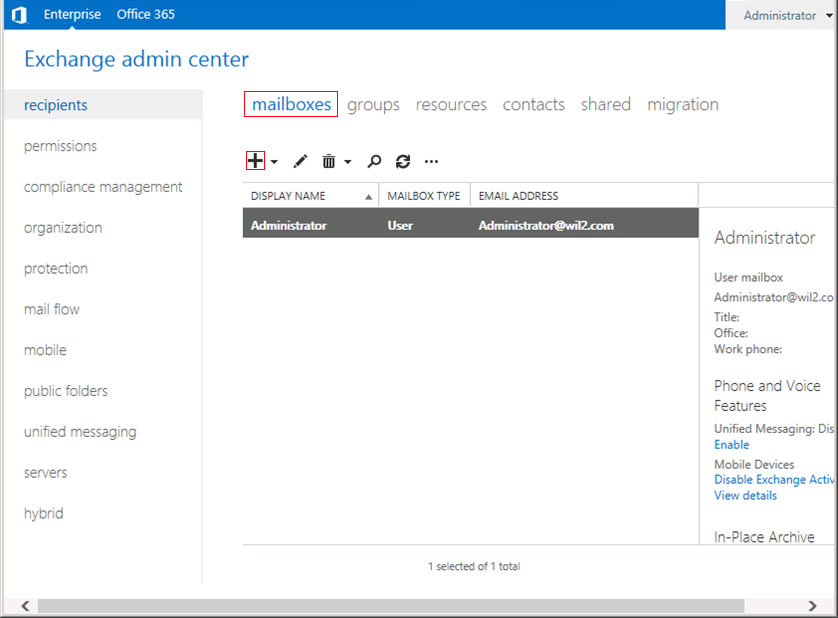
- In the new user mailbox page, enter details for the alternate journaling mailbox:
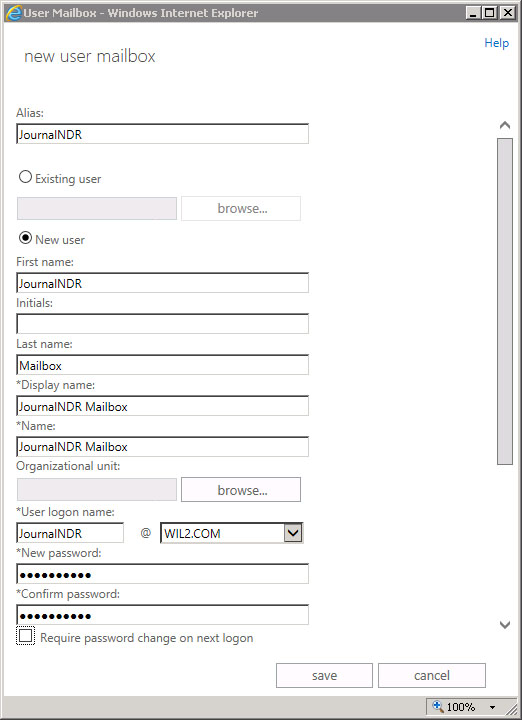
- Click save. The new mailbox displays in the mailboxes list:
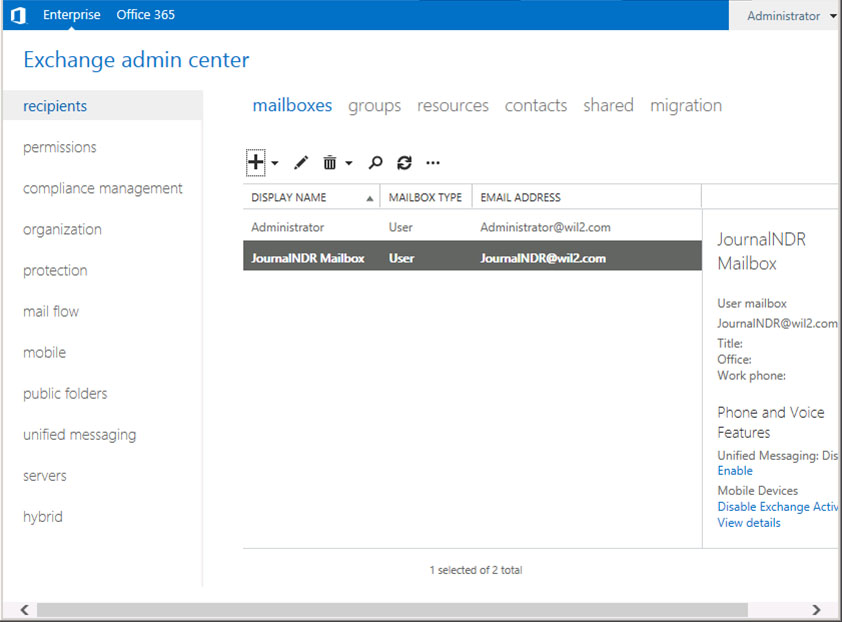
Hide Alternate Contact from GAL
Barracuda Networks recommends hiding the alternate mail contact from the GAL; to do so, with the new mailbox still selected, click the Edit ( ) icon. In the general page, turn on Hide from address lists:
) icon. In the general page, turn on Hide from address lists:

Create Send Connector for the Remote Domain
To route journaled mail that is sent to the contact to the Barracuda Cloud Archiving Service, use the following steps to create a Send Connector for the Remote Domain:
- Open the EAC, click mail flow in the left pane, select send connectors at the top of the page, and click the + symbol to create a new send connector:
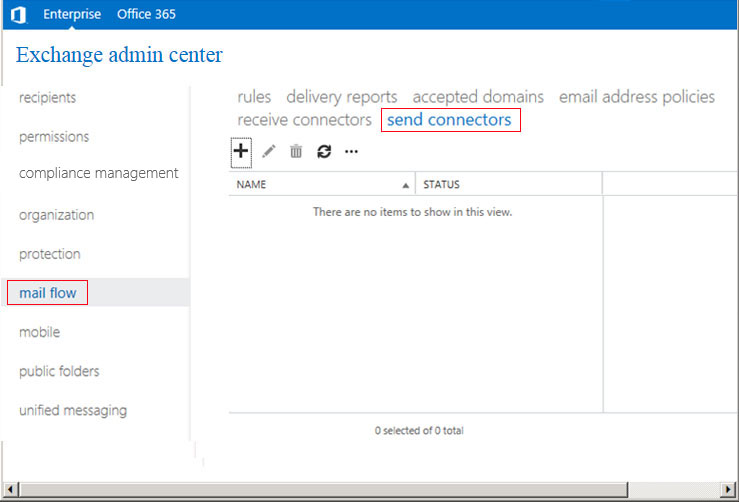
- In the Name field, enter a name for the connector, and in the Type section, select Custom:
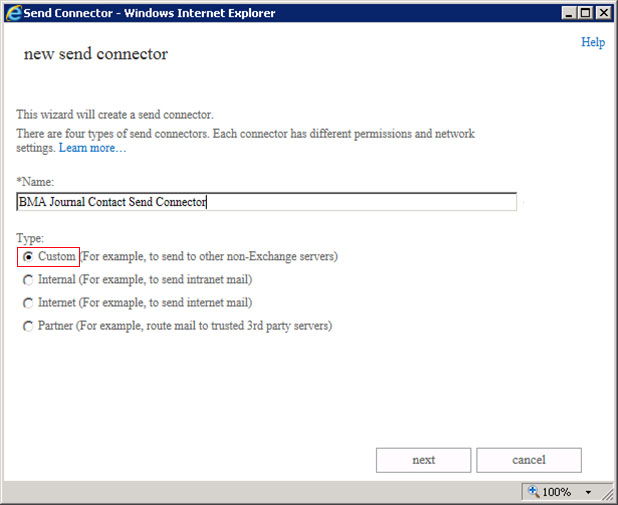
Click next. (Recommended) In the Network settings page, select MX record associated with recipient domain.

Click next. In the Smart host authentication page, because authentication is not used on the smart host connection to the Barracuda Cloud Archiving Service, no changes are necessary; click next:

- In the Address space section, click the + symbol:
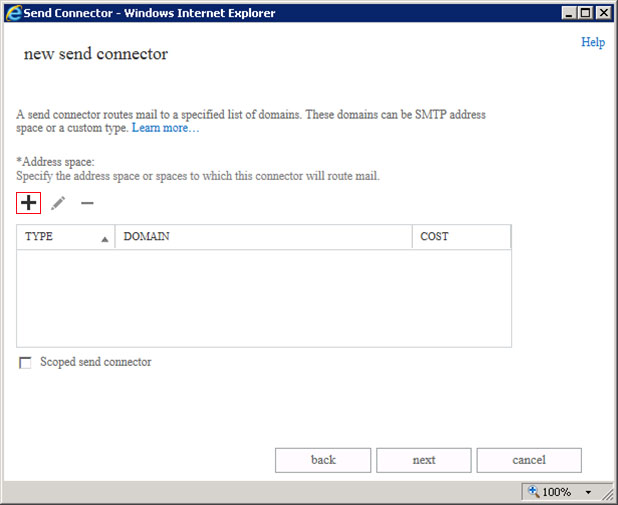
- In the Address Space page, enter the domain portion of your journaling address:
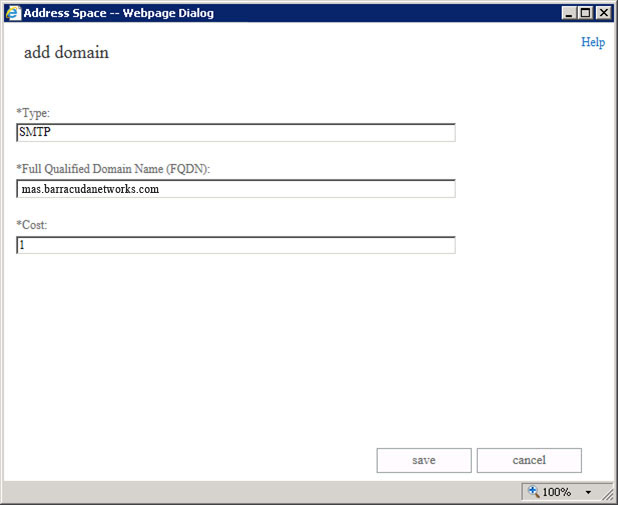
- The domain is added to the Address space list:
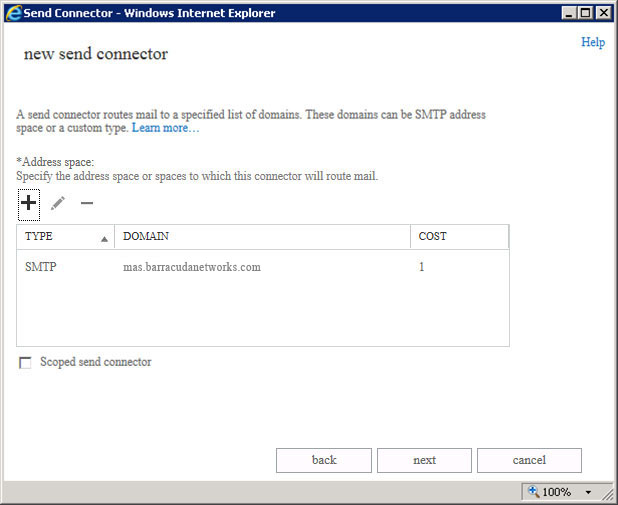
- Click next. In the Source server section, click the + symbol:
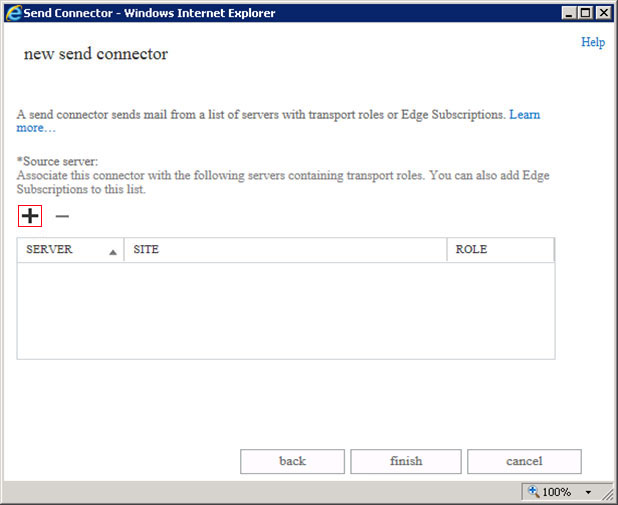
- Verify all of the Exchange Servers that are in the CAS role are listed; click add to add additional servers:
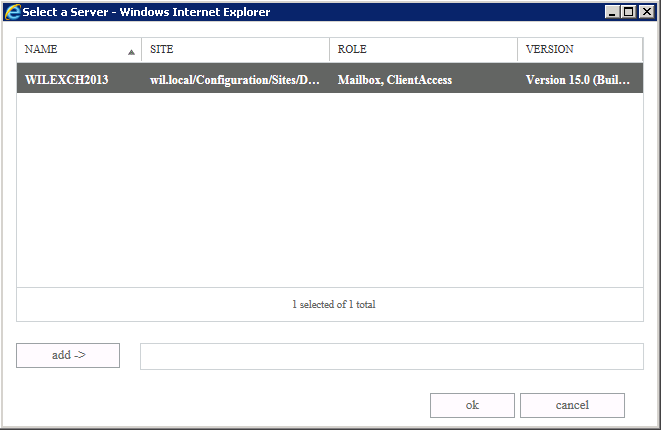
- Click OK. In the Source server page, the selected servers display:

- Click finish. The new send connector displays as enabled in the send connectors list:
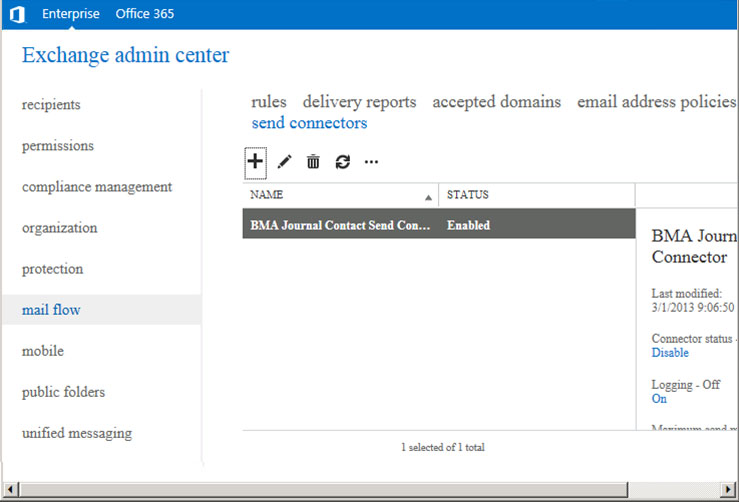
- Click the Edit (
 ) icon to edit the Send Connector properties. From the Maximum send message size (MB) drop-down list, select unlimited:
) icon to edit the Send Connector properties. From the Maximum send message size (MB) drop-down list, select unlimited:
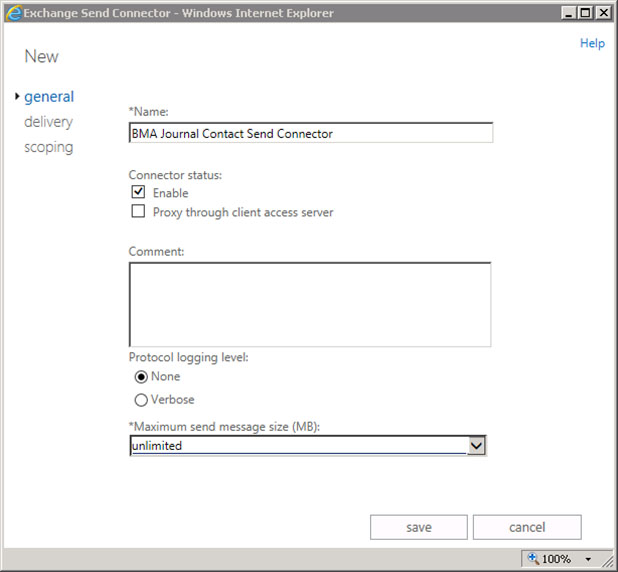
- Click save.
Create Journal Rule
Use the following steps to set up a journal rule:
- Log into the EAC and click compliance management in the left pane, select journal rules at the top of the page, and then click the + symbol:
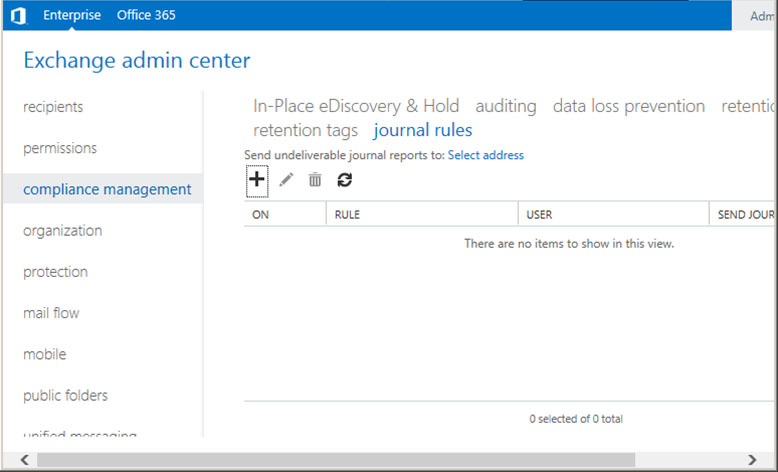
- In the new journal rule page, enter the following details:
- Enter a name for the journal rule.
- From the If the message is sent or received from list, select Apply to all messages.
- From the Journal the following messages list, select All messages.
- In the Send Journal Reports field, enter the SMTP address provided under Mail Sources > SMTP Journaling in the Cloud Archiving Service:

- Click save. If the warning message Do you want this rule to apply to all future messages displays, click yes:
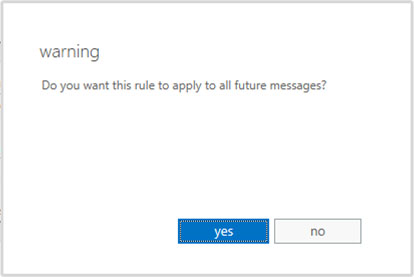
- The journal rule check box displays selected in the journal rules page:

- In the Send undeliverable journal reports to section, click Select address:
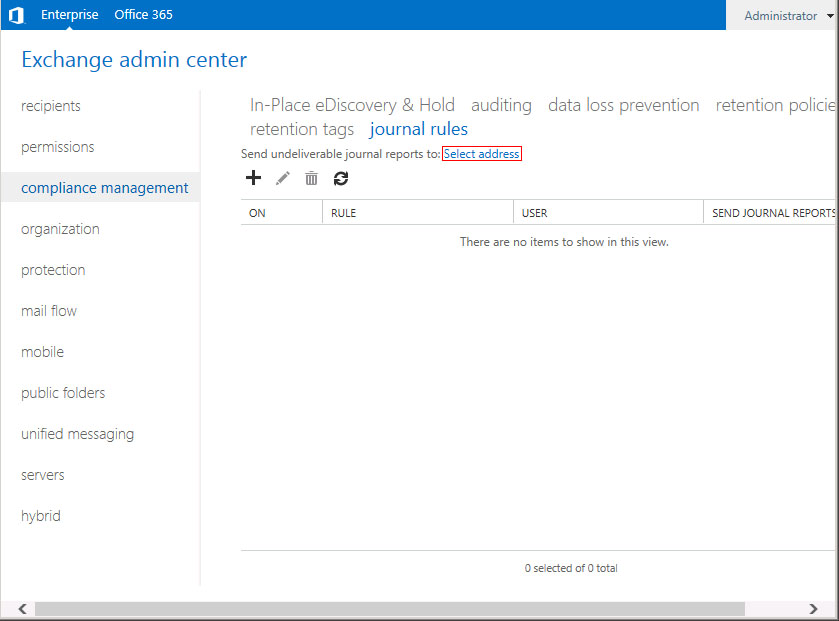
- In the non-delivery reports window, click browse:
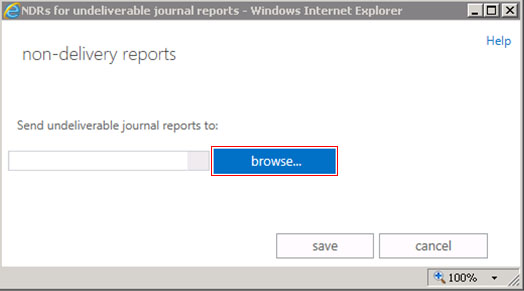
- Browse to and select the alternate mailbox created:

- Click OK . Verify your selection, and then click save:

- The address displays in the Send undeliverable journal reports to section:

Once you complete Option 1 or Option 2, the configuration is now complete and journaled mail is forwarded to the Barracuda Cloud Archiving Service
Log in and go to the Basic > Search page in the web interface to verify that new mail is being processed. Note that it may take up to 30 minutes before journaled mail is available in the search results.
Continue with Step 5 - Create Service Account.

























